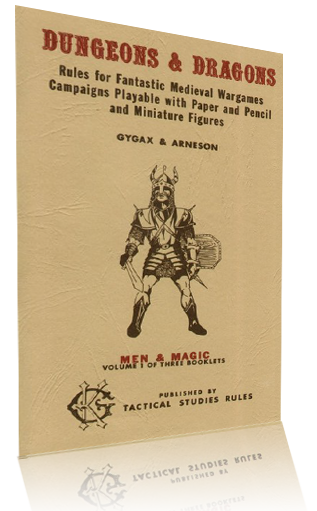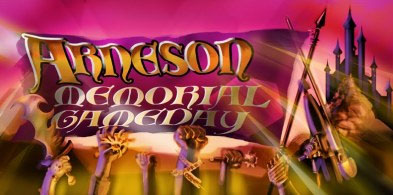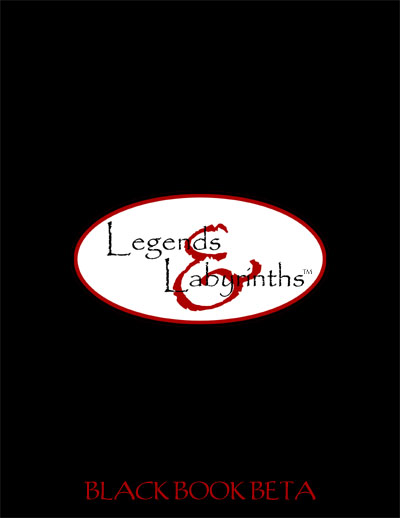Not quite as auspicious as Gary Gygax’s house rules, but these are the house rules we’ve developed as part of my Thracian Hexcrawl open table campaign.
 Virtually all of these rules are the result of discussing the rambling inconsistencies of the rulebooks. For the first five or six sessions of the campaign, in fact, every session started by tackling a few key passages and trying to unravel their meaning (which led to many different experimentations). Over time, however, the table settled sort of naturally into a set of “standard practices”, at which point I codified them and printed up a small booklet to accompany the copies of Volume 1: Men & Magic I have on the table.
Virtually all of these rules are the result of discussing the rambling inconsistencies of the rulebooks. For the first five or six sessions of the campaign, in fact, every session started by tackling a few key passages and trying to unravel their meaning (which led to many different experimentations). Over time, however, the table settled sort of naturally into a set of “standard practices”, at which point I codified them and printed up a small booklet to accompany the copies of Volume 1: Men & Magic I have on the table.
WEAPON DAMAGE
One-Handed Weapons: 1d6
Two-Handed Weapons: 2d6, take highest
Light Weapons: 2d6, take lowest
Bows
Short Bow: 2d6, take lowest
Long Bow: 1d6
Composite Bow: 2d6, take highest
Crossbows
Light Crossbow: 1d6
Heavy Crossbow: 2d6, take highest
(In OD&D, despite a lengthy list of different weapons all costing varying amounts of money, all attacks do 1d6 points of damage regardless of what weapon you’re using. This always prompted merry discussion. It gave rise to a memorable session in which a character opted, instead of buying a proper weapon, to simply turn 1 gp into 100 cp and then hurl copper pieces for the duration of the session. During this time period I read James Maliszewski’s Dwimmermount Campaign House Rules and mentioned his rule for two-handed weapons (2d6, keep highest). Everyone liked it and we quickly expanded upon the concept.)
DUAL-WIELDING
Dual-wielding grants you a +1 bonus on your attack roll. On a hit, you deal damage as per the most effective weapon. (You can’t dual-wield with a two-handed weapons unless you have more than two hands.)
HELMETS
Not wearing a helmet inflicts a -1 penalty to Armor Class.
(This was another rule prompted by consideration of the equipment list: Helmets are listed, but what are they good for?)
SHIELDS
Shields grant a +1 bonus to Armor Class (as shown on the combat tables) when they are readied. (Surprised characters do not benefit from their shields.) In addition:
Shields Shall Be Splintered:Whenever you take damage, you can opt to have the damage absorbed by your shield. The shield is splintered and destroyed, but you don’t take any damage from the blow.
Magic Shields: You can do the same with a magic shield, but the shield won’t be destroyed. Instead there will be a 75% chance that the shield will lose +1 of its enchantment.
Magic Shields vs. Spells: In addition, you can automatically sacrifice +1 from a magic shield in order to make a successful save vs. any spell, breath weapon, gaze, or similar effect.
Special Materials:
- Dragonscale Shields: Can be sacrificed like a magic shield in order to make a successful save vs. any spell, breath weapon, gaze, or similar effect.
- Silver–Faced Shield: Functions as a magic shield against spectral attacks (75% chance of the silver-facing being ruined).
(These rules are adapted from Trollsmyth’s Shields Shall Be Splintered and Aeons ‘n Auguries’ Splintering Shields by Material. Unlike the other house rules here, I included these simply because I liked ’em so much. The result? Unlike the other house rules, these are basically never used.
What I like about all of these house rules, however, is that they provide a simple-yet-effective method of making greatsword wielders (effectively +1 damage), dual-wielders (+1 to hit), and sword-and-boarders (+1 AC plus the splintering) all mechanically diverse and rewarding options.)
MOVE/TURN IN THE UNDERWORLD
1 turn = 10 minutes = 10 rounds = 2 moves
1 segment = 5 minutes = 1 move
1 move = speed x 10 feet
1 turn = 2 moves = speed x 20 feet
1 turn of flight = speed x 40 feet
Search a 10’ wall = 1 full turn
Listening/ESP/Clairvoyance/X-Ray = 1 quarter turn
(Check out Reactions to OD&D: Turns, Rounds, and Segments – Oh My! for a complete description of archaeological text work that was required to piece out this system.)
COMBAT SEQUENCE
- Declare Magic / Preparations
- Missiles
- Movement
- Magic
- Movement
- Melee
- Miscellaneous
All actions in a phase are considered simultaneous. If a character becomes incapacitated in a phase, they will generally not deal damage in that phase.
Surprise: Surprise allows one movement and one action.
Magic: Includes turning and most magic item use. Characters preparing to cast cannot take other actions. Any damage suffered while preparing forces a prime requisite check (modified by damage taken) to avoid losing the spell / turning.
Preparations: Retrieve 1 item, stow a weapon, draw a weapon (while dropping current weapon), pouring oil in front of you.
Missiles: Firing into melee has 50% chance of hitting a random target.
Movement: Move a number of feet equal to your speed (6” = 6 feet) or charge at twice that rate (suffering -2 penalty to AC and attacks for round).
Melee: If you’re engaged in melee, all non-melee actions (spells, missile fire, etc.) are considered a miscellaneous action and delayed until that phase. You cannot attack during melee if you are waiting to take a delayed action in the miscellaneous phase. (A spellcaster forced into melee during the first movement phase can’t cast until the miscellaneous phase, even though they were out of melee when they declared their spell.)
Miscellaneous: Includes helping wounded comrades, imbibing potions, lighting a flask of oil, etc.
Note: It is possible to shoot a missile weapon, move, move again (into melee), make a melee attack, and then drink a potion (although this would require you to be wielding a one-handed missile weapon and a one-handed melee weapon, since you wouldn’t be able to switch weapons between those actions). Similarly, one can declare a spell, cast a spell, move (into melee), and then make a melee attack (but if someone engages you in melee before the spell goes off, your casting is delayed to the miscellaneous phase and the other actions become impossible).
COMBAT SYSTEM DESIGN NOTES
OD&D doesn’t include a system for determining the order in which actions are resolved. My initial impulse was to embrace a system of simultaneous action resolution. We went through several variants of this — generally with a guideline that incapacitation favored the PCs (either striking one last valiant blow before falling unconscious or preventing monsters from dealing damage by slaying them first) — and what I discovered was that I could generally manage the system as long as the number of combatants remained relatively small.
But as group size grew — both due to the popularity of the open table and the increasing number of henchmen and hirelings — it became more difficult to juggle all of the disparate elements into a compelling narrative and game experience. This led to a fresh round of experimentation. Throughout this process I resisted the impulse to simply embrace initiative checks and call it quits (largely because I view my OD&D experiences as a chance to radically experiment with the basic game-form).
I eventually settled on this system, which is largely inspired by the Mmmmmm! System from Swords of Minaria and the Perrin Conventions. Resolution in each phase is simultaneous, but sufficiently broken up that I can manage much larger groups without losing all sense of cohesion and comprehension.
These house rules — and more! — can be found in the Blackmoor Player’s Reference.














